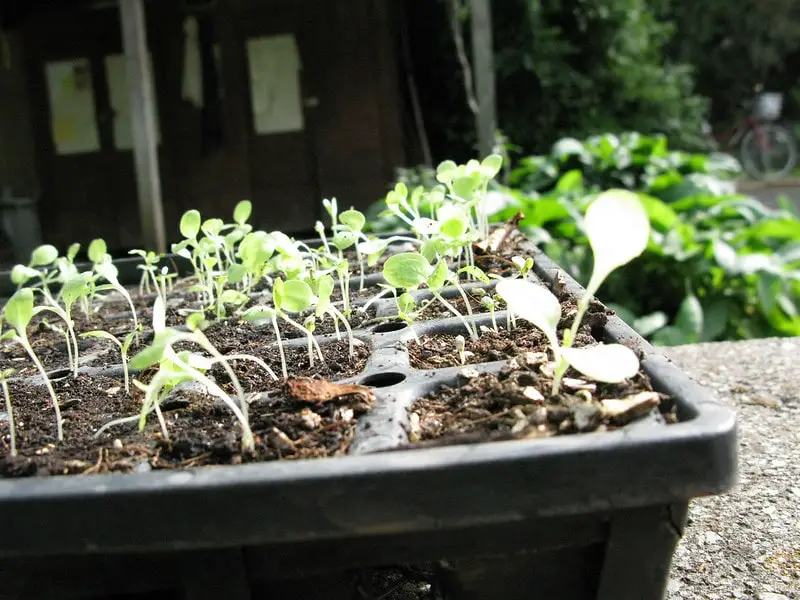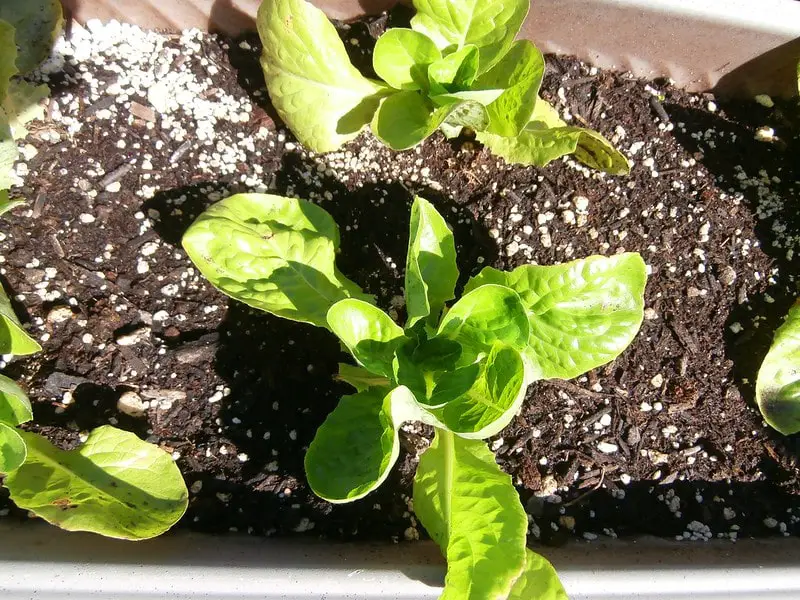We use affiliate links to run our site. When you buy through links on our site, we may earn an affiliate commission, without any added cost to you. Learn more
Ever wondered which growing medium works best for growing lettuces? Well, you can try many options. Other than soil, you can easily grow lettuces in mediums like Rockwool, Perlite, or Bark.
But there is one medium that works better than most of the other mediums, and that medium is coconut coir or coco coir.
Here in this article, I want to talk about coconut coir as a growing medium and why coco coir is the best growing medium for lettuce.
What is Coconut Coir?
Coconut coir or coco coir is a growing medium that is extracted from coconut husk. After de-husking, it goes through some processes to become a medium suitable for growing plants.
Coir was first introduced in the 19th century but at that time it failed to gain any attention. Later, at the end of the 20th century, people realized its potential as an organic, environmentally sustainable growing medium.
Which Coco Coir Should You Choose
You can get coco coir in various forms. You can choose, any form to grow lettuce.
- Compressed blocks: You have to rehydrate the block and then use it for growing lettuce.
- Loose coco coir: They are already in the ready-to-use format.
- Coco coir mixes: There are several mixes that use coco coir as the base.
No matter which one you choose, before planting always add some water to make the coir suitable for planting.
Adding Water to Your Coir:
Add 4-5 gallons of water to a 5-kilo block of coco coir. Initially, the water might run across the surface as the block is very firmly compressed. Use a large-sized container like a wheelbarrow or a garden cart and put the coir block in it.
Add water slowly. After adding one gallon of water, wait for some time. Give the coir time to absorb the water. Once that water is absorbed, add more.
Coir is virtually odorless, so you can prepare coir for planting, inside your house, without worrying about any stinky smell.
Why Use Coco Coir to Grow Lettuce Plants:
The following are the main benefits of growing lettuce in coir.
1. No Soil Pathogen:
The traditional way of using soil as a growing medium for lettuces has one major disadvantage and that is the pathogen problem. Unlike normal soil, coconut coir is not infested with any harmful fungi.
2. Helps Beneficial Bacteria:
Coconut coir is high in lignin. This organic compound helps in the development of beneficial bacteria which in turn reduce the propagation of harmful ones in the mediums
These beneficial bacteria remain in a symbiotic relationship with the lettuce plant and increase the overall lettuce productivity.
3. Great Water Retention Capacity:
The water retention capacity of the coir goes very well with the lettuce plants. If you plant lettuce in coir, you will need less frequent watering. As coco peat has excellent drainage capacity, using coco peat will also eliminate the problem of waterlogging.
4. Better Aeration than Normal Soil:
Lettuce needs a considerable amount of oxygen in its root zones. So it is inevitable that the medium for growing lettuces should have a good aeration property. That is one of the reasons that coconut coir is considered an ideal medium for growing lettuces.
The high level of aeration and fantastic drainage in coir encourage the plant roots to develop its full potential.
5. Lightweight Growing Medium:
Vertical towers are becoming more and more popular these days among gardeners, especially in urban areas. Using coir in place of soil will also make the towers lightweight and easier to transport.
Besides the high buffer capacity, the coir also ensures the slow release of the nutrients for an extended period and thus optimize plant growth.
Due to these attached benefits, coir has been broadly in use in greenhouses. They have increased productivity quite a fold.
Germinating Seeds in Coco Coir:
Germination is a very important factor in growing any plant. And one of the key factors of seed germination is the right growing medium.
So the first step in growing lettuce is seed germination.
During the germination process, the seeds need both water and oxygen to sprout. So an ideal growing medium should have plenty of them. Being a porous medium coco coir easily provides good aeration and also can hold water without getting soggy.
How to Germinate Lettuce Seeds in Coco Coir:


Though there are four varieties of lettuce, the process of sowing seeds is the same for all lettuce varieties.
- Soak your lettuce seeds in warm water for 24 hours. This will enhance the rate of germination.
- Use seedling trays to sow lettuce seeds. You can also use bio-degradable coir pots to sow the lettuce seeds.
- Fill your seedling tray with moist coconut coir. Remember the coir should be moist, not soggy.
- Make 1/2 cm pit in each cell of the seedling tray.
- Sow the lettuce seeds in those holes and cover them slightly with a bit of coconut coir.
- Sprinkle some water using a sprayer. If you are sowing more than one variety of lettuce don’t forget to label them.
Planting Lettuces:
You can grow lettuces in raised beds, containers, or garden rows. As you are using a light medium like coir, you can grow lettuce even in hanging baskets or vertical planters also.
As lettuces need full sun. Plant your lettuce where it gets at least 6 hours of sunlight. Use a wind protector if your area is very windy.
Add a good amount of compost to the coir.
For more information about how to grow lettuces read our detailed article on growing lettuces.
Tips for Growing Lettuces in Coco Coir:
1. Always use the coir from a reputed company. Not all coir are the same. The quality varies greatly on the processes and used raw materials.
As the quality of the coir will have a crucial impact on your lettuce plant, it’s very important that you choose your coir wisely.
2. Lettuces need calcium for their growth. Calcium is one of the few very important elements in a plant’s nutrition. So, before buying any coir please check its labels.
Normally coir doesn’t have a lot of calcium in it. But as an amendment, some companies decided to add calcium in their buffered coir media.
If your coir doesn’t have added calcium you might need to add gypsum or perlite to make it suitable for growing lettuces.
3. A potting mix, consisting of coconut coir, perlite, and compost is ideal for growing lettuces. One of the best combinations is 50% coconut coir with 30% perlite and 20% compost.
Like the post? Don’t forget to PIN IT


Amazon and the Amazon logo are trademarks of Amazon.com, Inc, or its affiliates.


Hi there! My name is Prasenjit and I’m an avid gardener and someone who has grown a passion for growing plants. From my hands-on experience, I have learned what works and what doesn’t. Here I share everything I have learned.


